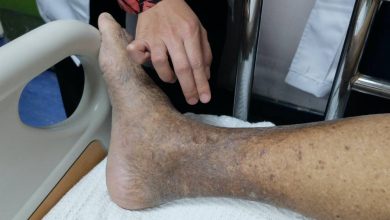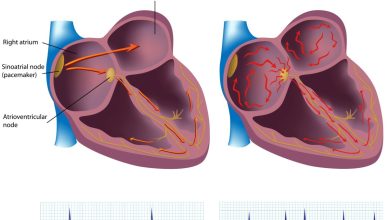Toxic Shock Syndrome Causes, Symptoms, Diagnosis and Treatment

What is Toxic Shock Syndrome?
Toxic Shock Syndrome is a rare, life-threatening complication of certain types of bacterial infections. Often toxic shock syndrome results from toxins produced by Staphylococcus aureus (staph) bacteria, but the condition may also be caused by toxins produced by group a streptococcus (strep) bacteria.
Causes of Toxic Shock Syndrome
Toxic Shock Syndrome is caused by either Staphylococcus or Streptococcus bacteria.
These bacteria normally live harmlessly on the skin, nose or mouth, but if they get deeper into the body they can release toxins that damage tissue and stop organs working.
The following can increase your risk of developing Toxic Shock Syndrome:
- Using Tampons – particularly if you leave them in for longer than recommended or you use “super-absorbent” tampons
- Using female barrier contraceptives, such as a contraceptive diaphragm or contraceptive cap
- A break in your skin, such as a cut, burn, boil, insect bite or surgical wound
- Childbirth
- Using nasal packing to treat a nosebleed
- Having a Staphylococcal infection or Streptococcal infection, such as a throat infection, impetigo or cellulitis
Symptoms of Toxic Shock Syndrome
Symptoms include:
- Confusion
- Diarrhea
- General ill feeling
- Headaches
- High fever, sometimes accompanied by chills
- Low Blood Pressure
- Muscle aches
- Nausea and vomiting
- Organ failure (most often kidneys and liver)
- Redness of eyes, mouth, throat
- Seizures
- Widespread red rash that looks like a Sunburn — skin peeling occurs 1 or 2 weeks after the rash, particularly on the palms of the hand or bottom of the feet
Diagnosis of Toxic Shock Syndrome
Your doctor may also do a blood test to check your liver and kidney function. They may also take swabs of cells from your cervix, vagina, and throat. These samples are analysed for the bacteria that cause toxic shock syndrome.
Treatment of Toxic Shock Syndrome
Treatment includes:
- Removal of materials, such as tampons, vaginal sponges, or nasal packing
- Drainage of infection sites (such as a surgical wound)
- The goal of treatment is to maintain important body functions. This may include:
- Antibiotics for any infection (may be given through an IV)
- Dialysis (if severe kidney problems are present)
- Fluids through a vein (IV)
- Medicines to control blood pressure
- Intravenous gamma globulin in severe cases
- Staying in the hospital intensive care unit (ICU) for monitoring
Related Articles:
Melasma Causes, Symptoms, Diagnosis and Treatment
Oedema Causes, Symptoms, Diagnosis and Treatment
Tinea Pedis Causes, Symptoms, Diagnosis and Treatment
Tinea Faciei Causes, Symptoms, Diagnosis and Treatment
Thrombophlebitis Causes, Symptoms, Diagnosis and Treatment
Thrombocytopenia Causes, Symptoms, Diagnosis and Treatment
Torticollis Causes, Symptoms, Diagnosis and Treatment
Eczema Causes, Symptoms, Diagnosis and Treatment
Tarsal Cyst Causes, Symptoms, Diagnosis and Treatment
By : Natural Health News




